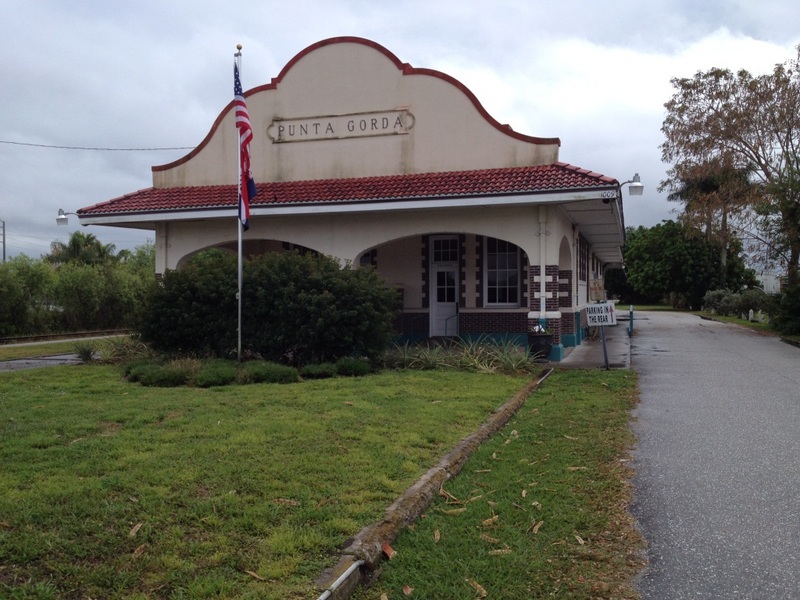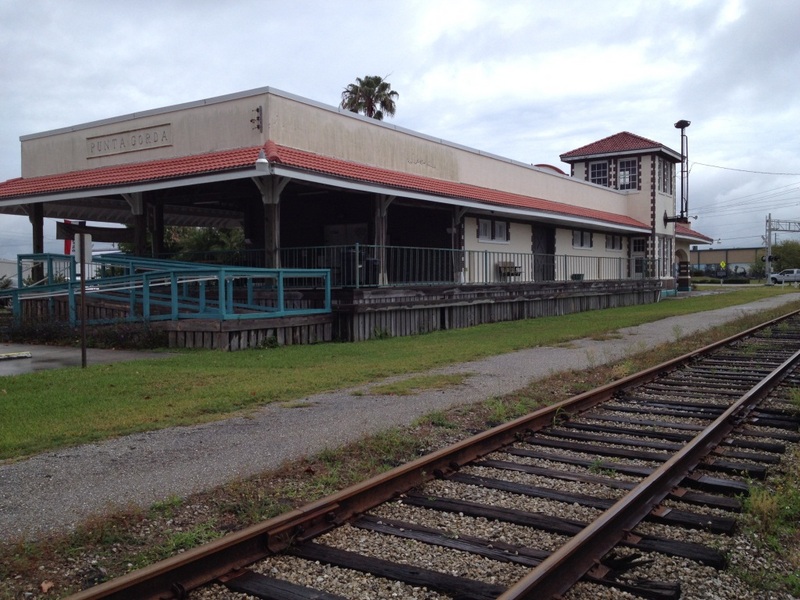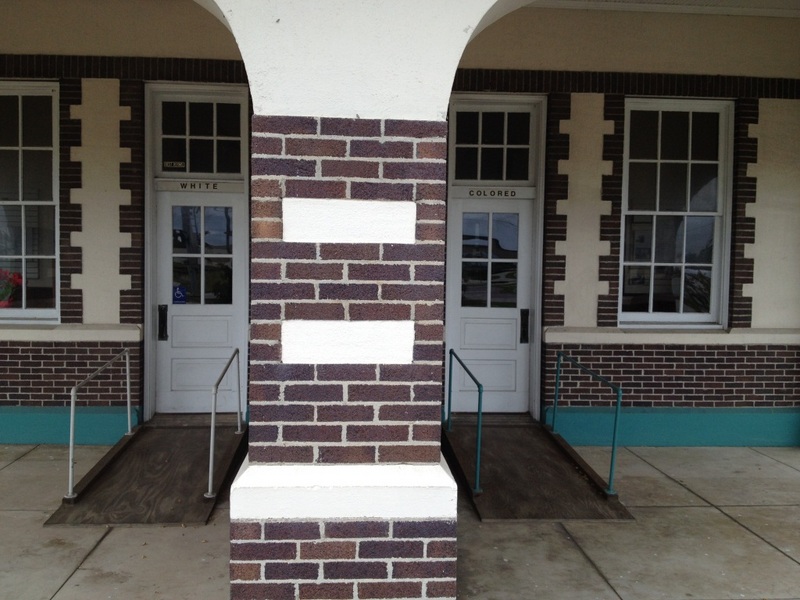Punta Gorda Atlantic Coast Line Depot
Built by the Atlantic Coast Line (ACL) Railroad Company in 1928, the Punta Gorda Atlantic Coast Line Depot is located at 1009 Taylor Road. The Mediterranean Revival-style depot was built during the Florida land boom of the 1920s, becoming the town’s third passenger rail depot. The first depot was built within the railroad’s turning wye in 1886, and the second depot was built along King Street in 1897. The first depot was located a couple of miles east of the ACL depot.[1]
Initially called Trabue, after Colonel Issac Hogden Trabue (1831-1907), who was an attorney and war hero that gave the Florida Southern Railroad half of his land holdings at what would become Punta Gorda, the city changed its name in 1887.[2] To return the favor to Trabue, the railroad agreed to build through the hamlet of "Trabue" and to construct a hotel. After the arrival of the railroad, a 4,200-foot dock was constructed below Trabue into Charlotte Harbor, allowing Florida Southern trains to meet Morgan Line steamboats.[3] The dock had to reach past the shallow inland waters so that steamboats did not risk running ashore.
Freight shipped in and out of the depot included pineapples from Solana, ice from the local icehouse, turpentine, propane, and fish.[4] Because of the excellent fishing, tourists came from all over to test their luck with local tarpon. In 1920 alone, over seven million pounds of fish were shipped out of Punta Gorda. The fishing industry died off in the 1950s, when canals were built. Although the depot was useful for some time, late night bumper noise and the smell of fish caused attendance to decline in the Punta Gorda Hotel next door.[5]
The depot hit its prime years before the Stock Market Crash of 1929 and the Great Depression. From 1930 to 1940, census data shows that the population decreased by over a thousand.[6] Passenger service ended in 1971 and freight service ended several years later. The depot is currently owned and operated by the Punta Gorda Historical Society, after it was willed to them by Fred Babcock, who purchased it after it closed, hoping to revamp it into a restaurant. It was listed on the U.S. National Register for Historical Places on December 12, 1990. The dpot is one of two surviving Mediterranean Revival-style depots out of the six that were constructed by the ACL.
[1] Scot Shively, Punta Gorda (Charlotte, NC: Arcadia Publishing, 2009), 19.
[2] Gregg M. Turner and Seth H. Bramson, The Plant System of Railroads, Steamships and Hotels (Laurys Station, PA: Garrigues House, Publishers, 2004), 40-41.
[3] Ibid. 41.
[4] "The Punta Gorda Train Depot," Punta Gorda Historical Society, accessed December 22, 2015, http://puntagordahistory.com/ourhistoricbuildings/puntagordatraindepot.html.
[5] Lindsey Williams, "Punta Gorda's Historic Depot Was Babcock's Last Gift," Lindsey Williams – Writer At Large, accessed December 22, 2015, http://www.lindseywilliams.org/index.htm?Articles/Punta_Gorda_Historic_Depot_Was_Babcocks_Last_Gift.htm~mainFrame.
[6] Douglas Houck, Historic Charlotte County: An Illustrated History (San Antonio, TX: Historical Pub. Network, 2011), 34.


